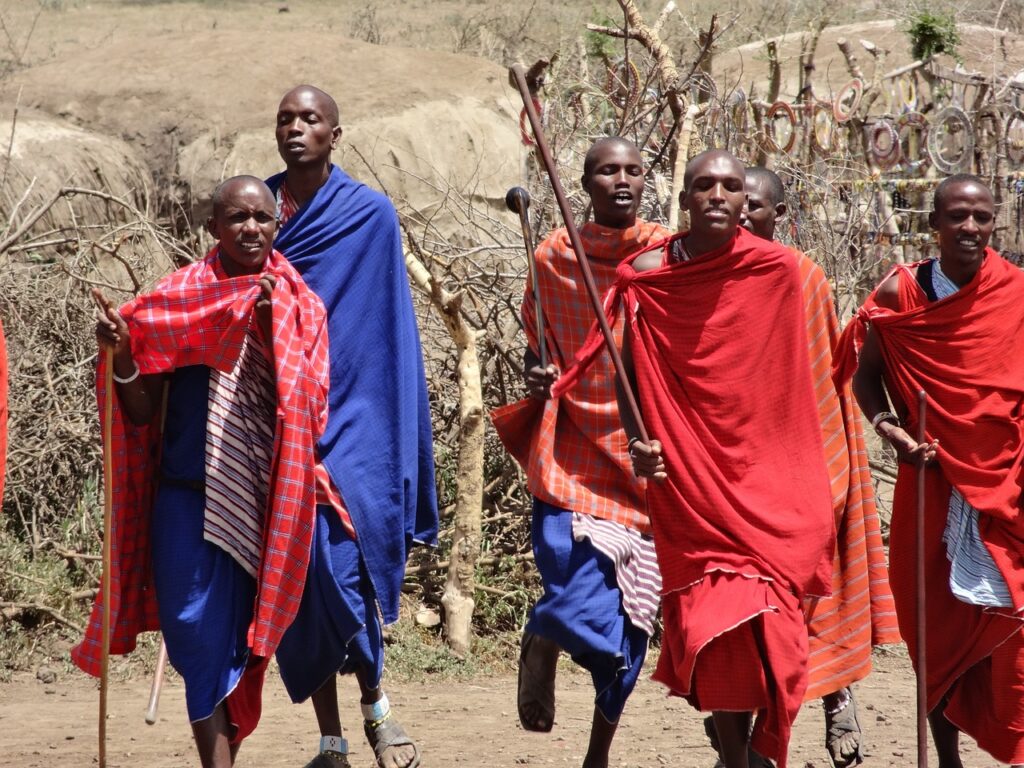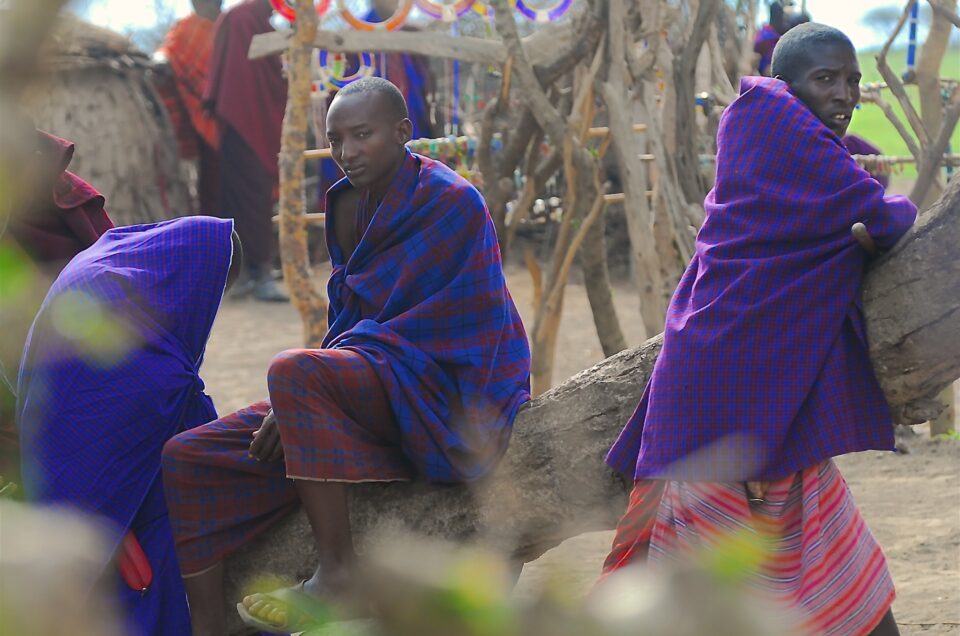Kenya Wildlife Service left the reserve in the hands of the local communities who manage the Mara reserve, giving the Maasai pastoralists the right to graze their stock on the perimeters of this magnificent reserve.
Although they lose some of their stock to wild animals, the Maasai manage to coexist peacefully with the game and rely only on their cattle for sustenance. Interestingly, the Maasai people measure their wealth by the number of livestock they own.
Strolling down the Maasai villages on a walking safari in Masai Mara, you’ll be amazed at the Maasai’s manyattas—beehive huts made of mud and cow dung. You can even spot them at the entrances to the reserve. Mara safari lodges offer visits to traditional Maasai villages and homes, and although inevitably these visits have become touristy, they’re still well worth doing.

The striking appearance of the Maasai, with their red robes and ochre-dyed and braided hair, is one of the abiding images of Kenya.
Witnessing the dramatic Ipid, a dance in which the moran (warriors) take turns to leap high into the air, will keep your camera clicking nonstop. The Maasai people named the reserve mara, which means “spotted,” but whether Mara applies to the landscape, which is spotted with vegetation, or the hundreds of thousands of wildebeest and other game that dot the landscape, is anybody’s guess.


